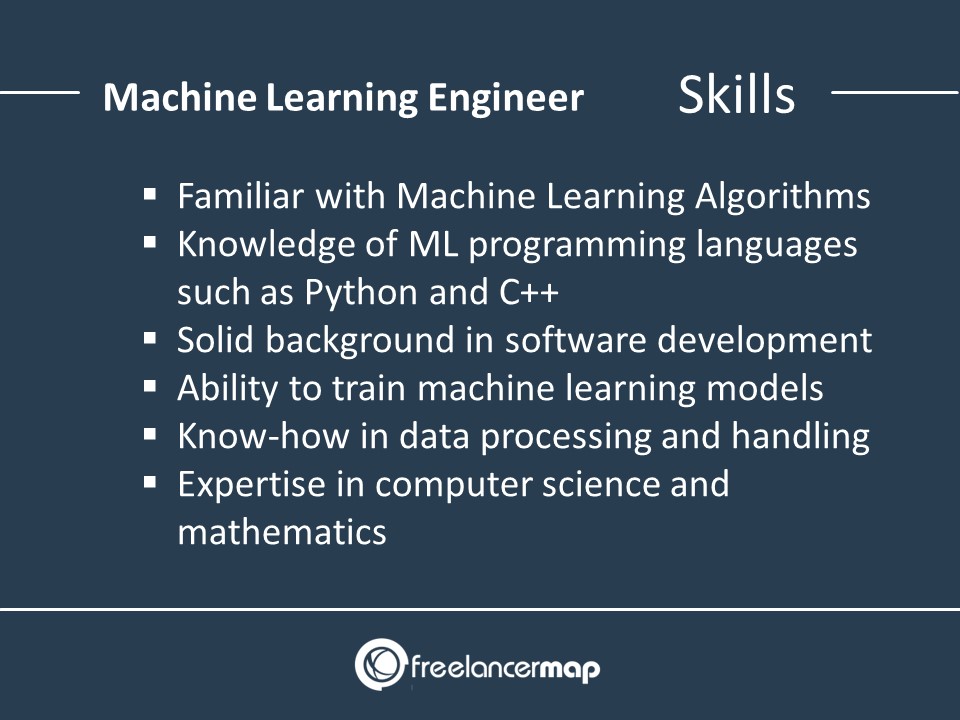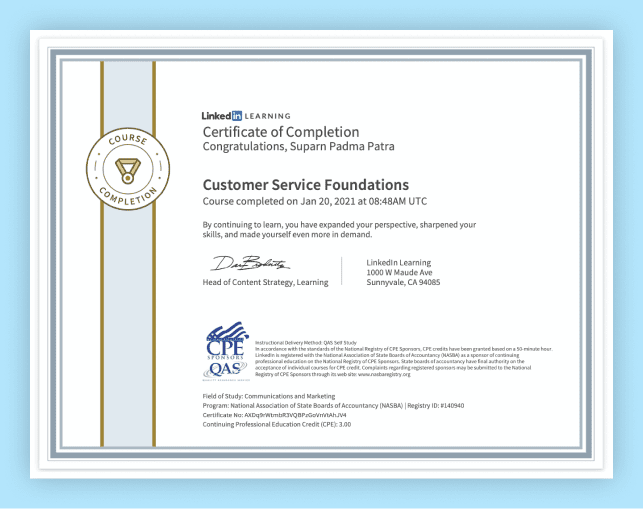All Categories
Featured
Table of Contents
- – Little Known Questions About Machine Learning ...
- – Some Ideas on How To Become A Machine Learning...
- – The smart Trick of Best Machine Learning Cour...
- – The Best Guide To Machine Learning Crash Cour...
- – The Main Principles Of How Long Does It Take...
- – Some Ideas on What Is A Machine Learning Eng...
You possibly recognize Santiago from his Twitter. On Twitter, every day, he shares a great deal of practical things concerning maker discovering. Alexey: Before we go into our primary subject of moving from software design to equipment understanding, maybe we can begin with your background.
I started as a software application designer. I mosted likely to university, obtained a computer scientific research level, and I began developing software program. I believe it was 2015 when I decided to go for a Master's in computer technology. At that time, I had no concept about machine discovering. I really did not have any kind of interest in it.
I recognize you've been utilizing the term "transitioning from software program design to machine knowing". I like the term "adding to my capability the artificial intelligence abilities" more due to the fact that I assume if you're a software engineer, you are already supplying a whole lot of value. By including equipment discovering currently, you're enhancing the influence that you can carry the sector.
Alexey: This comes back to one of your tweets or maybe it was from your training course when you compare two strategies to knowing. In this instance, it was some problem from Kaggle about this Titanic dataset, and you just find out exactly how to resolve this trouble utilizing a particular device, like choice trees from SciKit Learn.
Little Known Questions About Machine Learning & Ai Courses - Google Cloud Training.
You initially learn math, or straight algebra, calculus. When you know the math, you go to machine understanding theory and you learn the concept.
If I have an electric outlet right here that I need changing, I don't wish to most likely to college, spend 4 years understanding the math behind power and the physics and all of that, just to transform an outlet. I would certainly instead begin with the electrical outlet and discover a YouTube video that helps me experience the trouble.
Negative analogy. Yet you get the idea, right? (27:22) Santiago: I actually like the concept of beginning with a problem, attempting to throw away what I know as much as that issue and understand why it doesn't work. After that grab the devices that I require to address that problem and start excavating much deeper and much deeper and deeper from that factor on.
That's what I generally suggest. Alexey: Perhaps we can speak a little bit regarding discovering sources. You stated in Kaggle there is an introduction tutorial, where you can get and discover how to choose trees. At the start, prior to we started this meeting, you mentioned a number of books as well.
The only demand for that training course is that you recognize a little bit of Python. If you go to my account, the tweet that's going to be on the top, the one that states "pinned tweet".
Some Ideas on How To Become A Machine Learning Engineer & Get Hired ... You Should Know

Also if you're not a designer, you can begin with Python and work your means to more artificial intelligence. This roadmap is concentrated on Coursera, which is a system that I truly, actually like. You can examine every one of the programs completely free or you can pay for the Coursera subscription to get certificates if you intend to.
Alexey: This comes back to one of your tweets or maybe it was from your training course when you compare two strategies to understanding. In this instance, it was some issue from Kaggle concerning this Titanic dataset, and you simply discover exactly how to address this issue making use of a certain tool, like decision trees from SciKit Learn.

You initially find out math, or straight algebra, calculus. When you know the math, you go to maker understanding concept and you discover the concept.
If I have an electric outlet right here that I require changing, I do not intend to go to college, invest four years understanding the mathematics behind power and the physics and all of that, simply to transform an electrical outlet. I would rather start with the outlet and find a YouTube video that helps me go with the issue.
Bad analogy. However you get the idea, right? (27:22) Santiago: I really like the idea of starting with a trouble, attempting to toss out what I understand up to that trouble and recognize why it does not work. Grab the tools that I need to fix that problem and start excavating deeper and much deeper and much deeper from that factor on.
Alexey: Possibly we can speak a little bit regarding discovering sources. You pointed out in Kaggle there is an intro tutorial, where you can get and find out just how to make choice trees.
The smart Trick of Best Machine Learning Courses & Certificates [2025] That Nobody is Talking About
The only demand for that course is that you understand a little bit of Python. If you go to my profile, the tweet that's going to be on the top, the one that says "pinned tweet".
Even if you're not a designer, you can start with Python and work your way to even more artificial intelligence. This roadmap is concentrated on Coursera, which is a system that I truly, really like. You can audit all of the programs completely free or you can spend for the Coursera registration to obtain certificates if you want to.
The Best Guide To Machine Learning Crash Course For Beginners
That's what I would certainly do. Alexey: This returns to among your tweets or perhaps it was from your program when you contrast 2 techniques to discovering. One method is the problem based method, which you just talked about. You discover a trouble. In this situation, it was some problem from Kaggle about this Titanic dataset, and you simply find out how to resolve this trouble utilizing a details tool, like decision trees from SciKit Learn.
You initially learn mathematics, or straight algebra, calculus. When you recognize the math, you go to maker understanding concept and you discover the theory.
If I have an electrical outlet right here that I require changing, I do not intend to go to university, spend 4 years understanding the math behind electrical power and the physics and all of that, just to change an outlet. I would certainly rather start with the electrical outlet and discover a YouTube video that assists me experience the problem.
Santiago: I truly like the concept of beginning with a trouble, attempting to toss out what I know up to that issue and understand why it doesn't function. Grab the tools that I require to solve that trouble and begin excavating deeper and deeper and deeper from that point on.
Alexey: Maybe we can speak a little bit regarding learning sources. You mentioned in Kaggle there is an intro tutorial, where you can get and find out how to make decision trees.
The Main Principles Of How Long Does It Take To Learn “Machine Learning” From A ...
The only need for that course is that you know a little bit of Python. If you go to my account, the tweet that's going to be on the top, the one that claims "pinned tweet".
Even if you're not a programmer, you can start with Python and work your method to more machine understanding. This roadmap is concentrated on Coursera, which is a system that I actually, really like. You can investigate all of the programs completely free or you can spend for the Coursera membership to get certificates if you wish to.
Alexey: This comes back to one of your tweets or perhaps it was from your course when you compare two methods to understanding. In this situation, it was some problem from Kaggle regarding this Titanic dataset, and you just find out exactly how to address this issue making use of a specific tool, like choice trees from SciKit Learn.
You initially discover mathematics, or straight algebra, calculus. Then when you recognize the math, you go to artificial intelligence theory and you find out the theory. Then four years later on, you finally pertain to applications, "Okay, how do I make use of all these four years of mathematics to address this Titanic issue?" ? In the previous, you kind of conserve on your own some time, I believe.
Some Ideas on What Is A Machine Learning Engineer (Ml Engineer)? You Should Know
If I have an electrical outlet right here that I need replacing, I do not wish to go to university, invest four years comprehending the math behind electrical power and the physics and all of that, simply to change an electrical outlet. I would instead begin with the outlet and locate a YouTube video that aids me go via the trouble.
Santiago: I actually like the concept of starting with an issue, attempting to toss out what I understand up to that issue and understand why it does not work. Get hold of the tools that I require to resolve that issue and begin excavating deeper and much deeper and deeper from that point on.

Alexey: Possibly we can speak a bit regarding learning resources. You mentioned in Kaggle there is an intro tutorial, where you can get and find out how to make decision trees.
The only need for that course is that you know a little bit of Python. If you go to my profile, the tweet that's going to be on the top, the one that states "pinned tweet".
Even if you're not a developer, you can begin with Python and function your method to more artificial intelligence. This roadmap is concentrated on Coursera, which is a system that I actually, truly like. You can examine all of the training courses free of cost or you can pay for the Coursera subscription to get certifications if you wish to.
Table of Contents
- – Little Known Questions About Machine Learning ...
- – Some Ideas on How To Become A Machine Learning...
- – The smart Trick of Best Machine Learning Cour...
- – The Best Guide To Machine Learning Crash Cour...
- – The Main Principles Of How Long Does It Take...
- – Some Ideas on What Is A Machine Learning Eng...
Latest Posts
The Star Method – How To Answer Behavioral Interview Questions
Best Leetcode Problems To Practice For Faang Interviews
What To Expect In A Faang Data Science Technical Interview
More
Latest Posts
The Star Method – How To Answer Behavioral Interview Questions
Best Leetcode Problems To Practice For Faang Interviews
What To Expect In A Faang Data Science Technical Interview